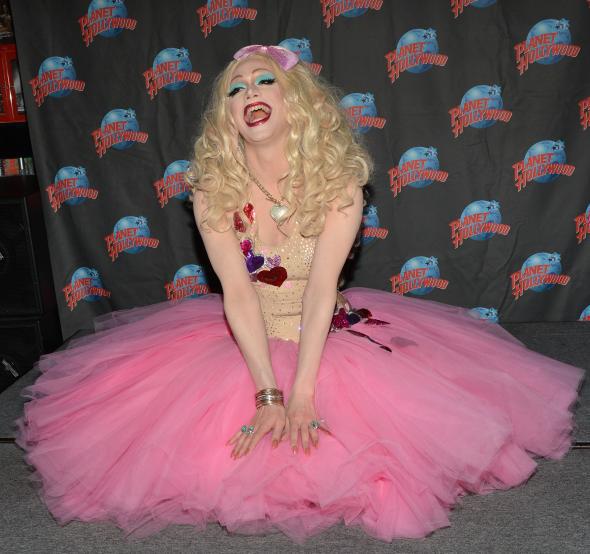This should come as a surprise to no one, but Disney-style “princesses”—figures like Mulan, Cinderella, and Belle—are a big deal with young girls. This state of affairs pleases Disney’s marketing department, naturally, but feminist-minded parents, not so much. (Waiting around in a stone tower for Prince Charming to kick-start your life has a strange way of sparing you from any of feminism’s various waves.) But playroom change is hard: More progressive alternatives to pink taffeta and tiaras generally face resistance; however, Joy Martin-Malone, a blogger for Mamapop, proposed a new replacement yesterday that I heartily support: Drag queens.
Martin-Malone’s essay is full of smart reasoning for her recommendation that Sharon Needles claw the spotlight away from Snow White, not to mention some press-on sharp observations about the lack of physical distinction between princesses and queens: “Both wear grandiose costumes and perform signature songs. Big hair is an absolute staple across the board. Both have been known to make their shining debut at the local ball.” Switch them out, and your daughter won’t even know the difference.
What she will gain, however, are more subtle lessons. Martin-Malone’s most insightful point concerns drag queen economics:
… ever wonder how those princesses are getting their fancy gowns and blinged-out crowns? Of the 11 Disney princesses currently included in the franchise, only one has ever had a job. (Apparently Tiana was born with such a socioeconomic disadvantage that she had to work two jobs to even attempt to make her big princess dreams a reality. [See also: discrimination.] And after all that hard work, she still couldn’t seem to get ahead until she locked down a prince whose family could buy her those dreams.) Drag queens, on the other hand, have a strong work ethic. Basically, if a queen isn’t working her butt pads off, she isn’t making tips. No one is going to pay to watch a man put on a sequined dress and sit in the middle of the dance floor.
One of the important elements of drag performance that is being lost in the translation from trashy club to glistening RuPaul’s Drag Race set is the exchange of money for a service. At a typical drag show, patrons are expected to tip the queen with cash—often, during the middle of a lip-synch routine or comedy act—if they like what they see. The point being, while some queens may enjoy the attention of limited fame, most are just trying to earn a living with their inventiveness, wit, and artfulness. As a role-model for young girls (and boys), a fierce queen is heads-and-shoulders above a silly princess—and that’s not just because of the heels.
